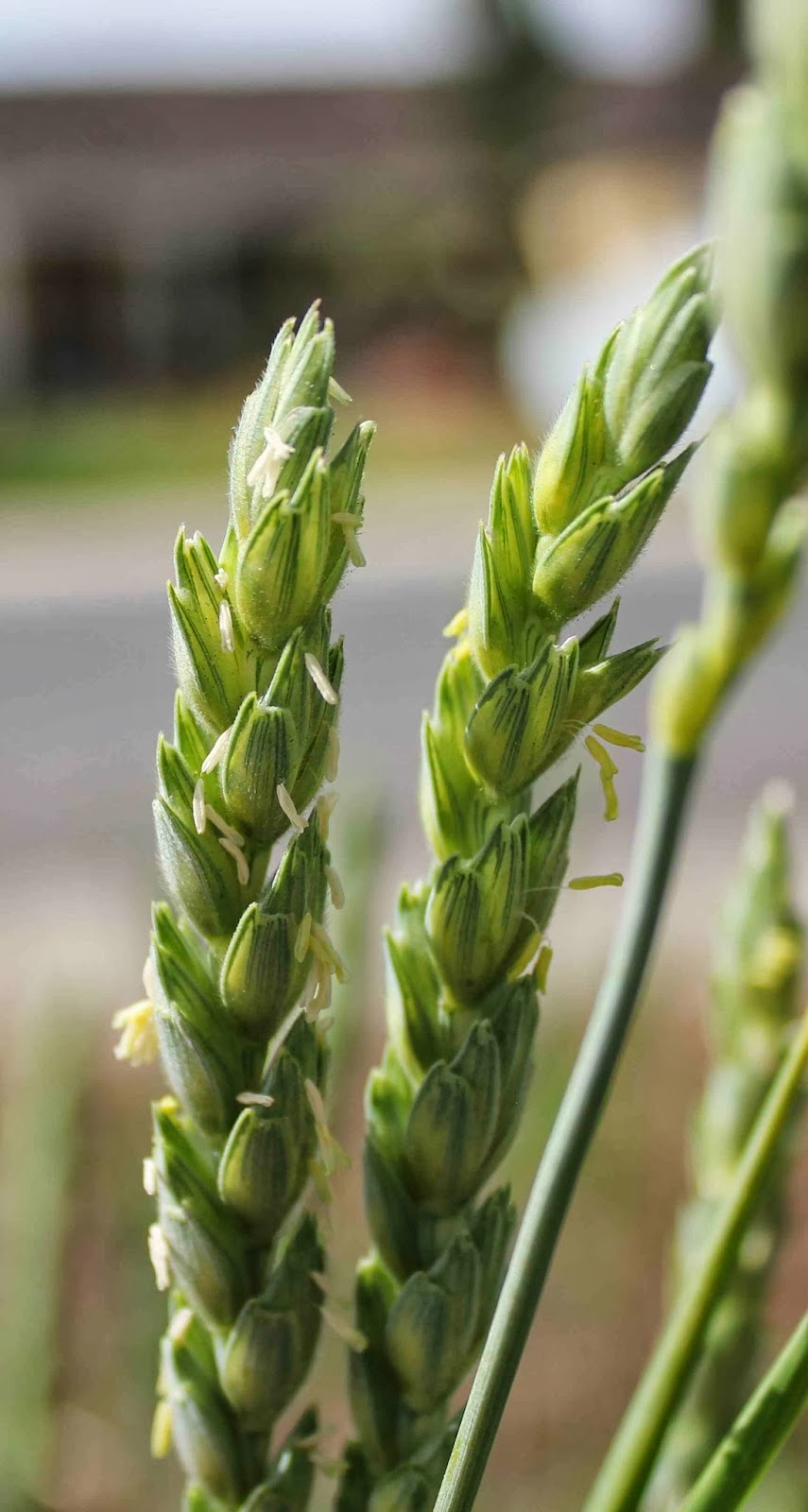To test grain seed to see whether it will grow, fold a few kernels -- "wheat berries" -- in a damp paper towel.
Place
in a ziploc sandwich bag and keep it at room temperature.
Many kinds of wheat seed will show seminal roots
in two days.
Certainly within a week
all viable seeds will have roots and the initial growth shoot. The magic has begun.
Pictured are Emmer (Farro) seeds after three days in a folded paper towel. To a city-dweller's eyes, there is some variability in their initial enthusiasm, but 100% have gotten a start.
Emmer is thought to be the oldest cultivated wheat, with evidence of grain found in present-day Iran from 9600 BC.
Most grain seeds from bulk bins can be used to grow grain,
though the exact variety and its quality will not be known. Unless severely
mistreated, wheat seed has a long lifetime of viability.
This is a sprout of Khorasan (Triticum turanicum) an ancient (Tetraploid) variety of wheat. Sometimes sold under the trademark name, Kamut, the kernel on the paper towel had a growth shoot of nearly two inches in four days. Seed planted in the ground at a depth of two inches had simultaneously reached the surface in those same four days.
If you don’t want to use up your paper towels, put some
seeds in a mason jar with cheese cloth for a lid. Soak seeds in clean water for 12 hours and repeat once
with a change of water. Then up-end the
jar in your dish drain for a couple of days, giving them a rinse every so
often. If the seeds are viable, you’ve
have a small forest of sprouts to add to your bread, your salads, or your
breakfast cereal.
Incidentally, malted grain (usually barley, but can be
wheat) is basically sprouted kernels that are kiln dried at a low temperature
(~ 130 degrees F.) and then ground up for use in brewing or baking.
 It's been a dry couple of months, but he was able to plant 8 acres of Sonora on February 17th.
It's been a dry couple of months, but he was able to plant 8 acres of Sonora on February 17th.




















